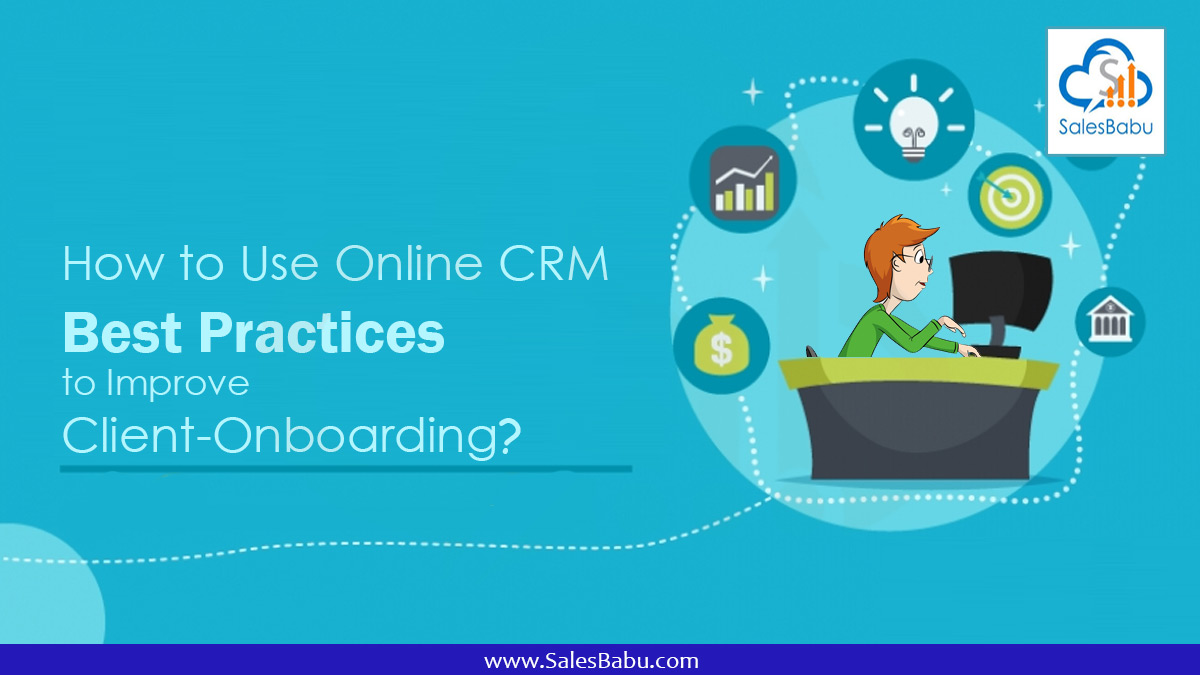Embark on a transformative journey with CRM onboarding, a strategic process that empowers businesses to seamlessly integrate their CRM systems, unlocking a wealth of benefits and optimizing customer relationships. This comprehensive guide delves into the intricacies of CRM onboarding, providing invaluable insights and best practices to ensure a successful implementation.
From planning and preparation to user training, data migration, and continuous improvement, we will explore each stage of the onboarding process, equipping you with the knowledge and strategies to maximize the potential of your CRM system.
CRM Onboarding Overview
CRM onboarding is the process of integrating new users into a company’s customer relationship management (CRM) system. It involves providing training, resources, and support to help users understand the system’s functionality and how to use it effectively.
Effective CRM onboarding can provide several benefits for organizations, including:
- Increased user adoption and engagement with the CRM system
- Improved data quality and accuracy
- Enhanced customer service and satisfaction
- Increased sales productivity
Key Stages of CRM Onboarding
The CRM onboarding process typically involves several key stages:
- Assessment:Identifying the user’s needs and goals for using the CRM system
- Training:Providing training on the system’s functionality and best practices
- Implementation:Assisting users in setting up the system and customizing it to meet their needs
- Support:Providing ongoing support to users as they use the system
Successful CRM Onboarding Strategies
Several strategies can help ensure successful CRM onboarding:
- Tailoring the onboarding process to the user’s role and experience level
- Using a variety of training methods, such as online tutorials, instructor-led training, and on-the-job training
- Providing ongoing support and resources to users
- Measuring the effectiveness of the onboarding process and making adjustments as needed
Planning and Preparation
Successful CRM onboarding requires meticulous planning and preparation. This phase lays the groundwork for a seamless transition and ensures that all stakeholders are aligned with the project’s goals.
Key Stakeholders:
- Business leaders and decision-makers
- CRM implementation team
- End-users (sales, marketing, customer service)
- IT support
Setting Clear Goals and Objectives:
Defining specific, measurable, achievable, relevant, and time-bound (SMART) goals is crucial for a successful onboarding process. These goals should align with the organization’s overall business objectives and provide a clear roadmap for the implementation team.
User Training and Adoption

Effective user training and adoption are critical for successful CRM implementation. Training should focus on the system’s functionality, benefits, and best practices.
Strategies for encouraging user adoption include: providing ongoing support, recognizing user successes, and addressing challenges promptly.
Gamification and Incentives
Gamification and incentives can enhance adoption by making training and usage more engaging and rewarding. Examples include:
- Points and badges for completing training modules
- Leaderboards to track user progress
- Prizes or rewards for achieving adoption milestones
Data Migration and Integration
Data migration and integration are crucial steps in the CRM onboarding process. By seamlessly transferring data from legacy systems and integrating the CRM with other business systems, organizations can ensure data accuracy, streamline processes, and enhance overall efficiency.
Best Practices for Data Migration, Crm onboarding
- Plan thoroughly:Define the scope of the migration, identify data sources, and establish a timeline.
- Cleanse and validate data:Remove duplicate and inaccurate data to ensure data integrity.
- Use appropriate tools:Leverage data migration tools to automate the process and minimize errors.
- Test and verify:Conduct thorough testing to ensure data accuracy and completeness.
- Monitor and support:Track the migration progress and provide support to users during the transition.
Importance of Data Cleansing and Validation
Data cleansing and validation are essential to ensure the accuracy and reliability of data in the CRM. By removing duplicate, incomplete, or inaccurate data, organizations can improve data quality, enhance reporting, and make informed decisions.
Methods for Integrating the CRM with Other Business Systems
Integrating the CRM with other business systems, such as ERP, marketing automation, and customer support, enables a comprehensive view of customer data and streamlines business processes.
- API integration:Use application programming interfaces (APIs) to connect the CRM to other systems.
- Data synchronization:Establish automated data exchange between the CRM and other systems.
- Custom integrations:Develop tailored integrations to meet specific business requirements.
Process Optimization and Automation: Crm Onboarding
Optimizing and automating processes are crucial for enhancing CRM efficiency and accuracy. Identifying areas for improvement and leveraging automation can streamline workflows, save time, and minimize errors.
Automating repetitive tasks frees up valuable time for more strategic initiatives, allowing teams to focus on customer engagement and revenue generation.
Opportunities for Process Optimization
- Identify bottlenecks and inefficiencies in current workflows.
- Streamline communication channels to reduce duplication and delays.
- Centralize customer data for easy access and analysis.
Benefits of Automating Repetitive Tasks
- Improved efficiency by reducing manual labor and processing time.
- Enhanced accuracy by eliminating human error.
- Increased productivity by freeing up staff for higher-value tasks.
Examples of Automation
- Automated lead scoring and qualification to prioritize sales efforts.
- Email marketing campaigns to nurture leads and drive conversions.
- Automated customer service chatbots to provide 24/7 support.
Measurement and Evaluation

Assessing the effectiveness of CRM onboarding is crucial for ensuring successful adoption and long-term value. Key metrics to monitor include:
- User adoption rate: Percentage of users actively using the CRM system.
- Time to productivity: Average time it takes users to become proficient in using the CRM.
- Data quality: Accuracy and completeness of data entered into the CRM.
- Process efficiency: Time and effort saved by using the CRM.
- Customer satisfaction: Improvement in customer experience due to enhanced CRM capabilities.
Ongoing monitoring and evaluation are essential for identifying areas for improvement. Regular feedback collection through surveys, user interviews, and system usage data can provide valuable insights into user experiences and system performance.
Methods for Collecting Feedback
Various methods can be employed to gather feedback and make improvements:
- User surveys:Distribute surveys to users to gather feedback on their onboarding experience, system usability, and areas for improvement.
- User interviews:Conduct one-on-one or group interviews with users to gain in-depth insights into their challenges and suggestions.
- System usage data:Analyze CRM usage data to identify patterns, bottlenecks, and areas where users may need additional support.
By continuously monitoring, evaluating, and collecting feedback, organizations can make data-driven improvements to their CRM onboarding process, ensuring a successful and sustained adoption.
Continuous Improvement
Continuous improvement is crucial for optimizing CRM onboarding and ensuring its effectiveness. By regularly gathering feedback, identifying areas for enhancement, and staying up-to-date with industry trends and technologies, organizations can continuously refine their onboarding processes to maximize user adoption and drive business value.
Gathering Feedback and Identifying Areas for Enhancement
- Conduct user surveys and interviews to gather feedback on the onboarding experience, identifying areas for improvement.
- Use analytics to track user engagement, identify bottlenecks, and measure the effectiveness of onboarding materials.
- Establish a feedback loop to encourage users to provide ongoing suggestions and report any issues encountered.
Staying Up-to-Date with CRM Trends and Technologies
- Attend industry events, webinars, and conferences to stay informed about the latest CRM trends and best practices.
- Subscribe to industry publications and blogs to keep abreast of emerging technologies and their potential impact on CRM onboarding.
- Engage with CRM vendors and consultants to gain insights into new features and capabilities that can enhance onboarding processes.
Concluding Remarks
In the ever-evolving landscape of customer relationship management, CRM onboarding serves as a cornerstone for businesses seeking to establish a robust and effective CRM foundation. By embracing the principles Artikeld in this guide, you can navigate the complexities of CRM implementation, foster user adoption, and drive tangible results that empower your organization to thrive in the digital age.
Popular Questions
What is the primary objective of CRM onboarding?
CRM onboarding aims to ensure a smooth and successful integration of a CRM system into an organization, maximizing its benefits and driving user adoption.
How can I measure the effectiveness of my CRM onboarding strategy?
Key metrics such as user adoption rates, data accuracy, and process efficiency can be used to evaluate the success of your CRM onboarding initiatives.
What are some best practices for data migration during CRM onboarding?
Prioritize data cleansing and validation, establish a clear data mapping strategy, and leverage migration tools to ensure data integrity and minimize disruptions.
